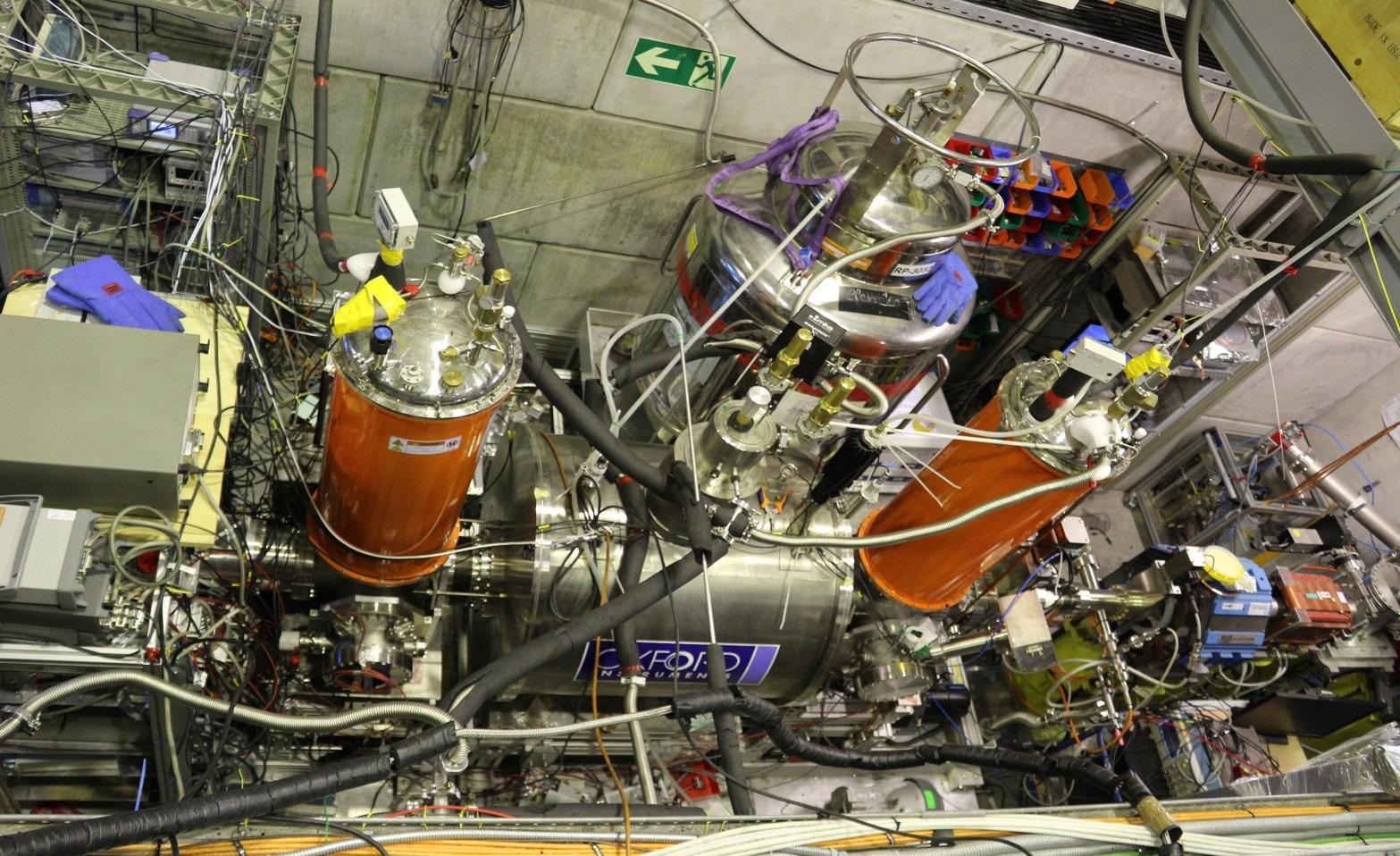Mar 29 2021
The Antimatter Factory at CERN is the world’s only facility that produces low-energy antiprotons—the antimatter equivalents of protons.
 A bird’s-eye view of the BASE experiment. Image Credit: CERN.
A bird’s-eye view of the BASE experiment. Image Credit: CERN.
However, very soon the facility could even be the first one to transport trapped antiprotons to another location. The CERN Research Board, on March 17th, 2021, approved the creation of two new experiments to transport antiprotons from the Antimatter Factory to other facilities, for nuclear-physics and antimatter research works.
The experiments named PUMA and BASE-STEP are sufficiently compact to be carried in a small truck or van.
The basis for BASE-STEP is the BASE experiment—involving an arrangement of traps to store and study in-depth antiprotons generated at the Antimatter Factory.
The BASE team employs this arrangement to quantify the properties of the antiproton and compares them with those of the proton to verify whether there are any differences between the two
In case they find any differences, those could offer insights into the imbalance between matter and antimatter in the universe.
Although the BASE team has been carrying out much more accurate antiproton measurements, the precision of these measurements is restricted by disturbances to the arrangement’s magnetic field due to the magnetic environment of the Antimatter Factory.
BASE-STEP is a variant of the BASE arrangement designed to be transported to a facility at CERN or another location—one with a calmer magnetic environment and thus enabling measurements of higher precision to be performed.
The device will include a first trap for obtaining and releasing the antiprotons generated at the Antimatter Factory and a second trap for storing the antiprotons.
The basis for PUMA is a different transportable antiproton trap system and with a different scientific aim. It will carry antiprotons from the Antimatter Factory to ISOLDE—CERN’s nuclear-physics facility—for examining exotic nuclear-physics phenomena.
It will feature a first trapping zone for blocking antiprotons, and a second one to anchor collisions between the antiprotons and radioactive atomic nuclei regularly synthesized at ISOLDE but which decay too quickly to be carried anywhere themselves.
An investigation of the results of these collisions—which will be detected by using a particle detector placed around the collision zone—will enable the team to identify the relative densities of neutrons and protons at the surface of nuclei.
These densities could indicate whether the nuclei exhibit exotic properties like thick neutron “skins” or extended halos of neutrons or protons surrounding their core. Such insights could throw light on the inner workings of neutron stars.
It is expected that BASE-STEP and PUMA will be operational in 2023.